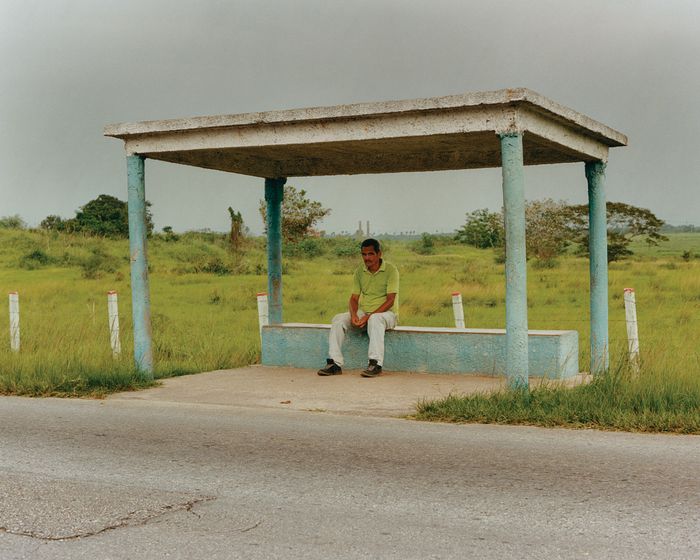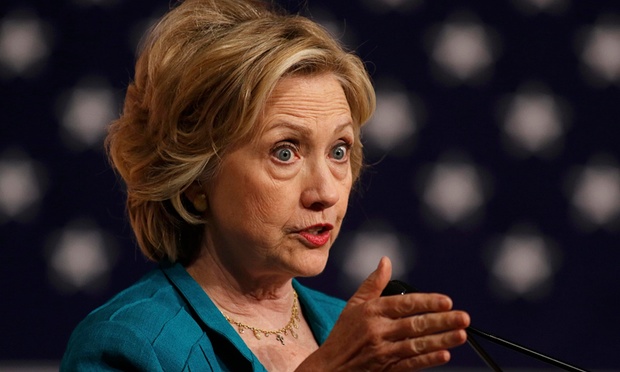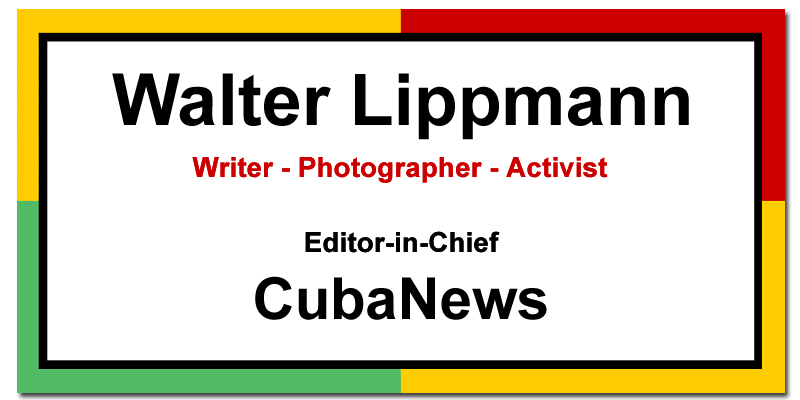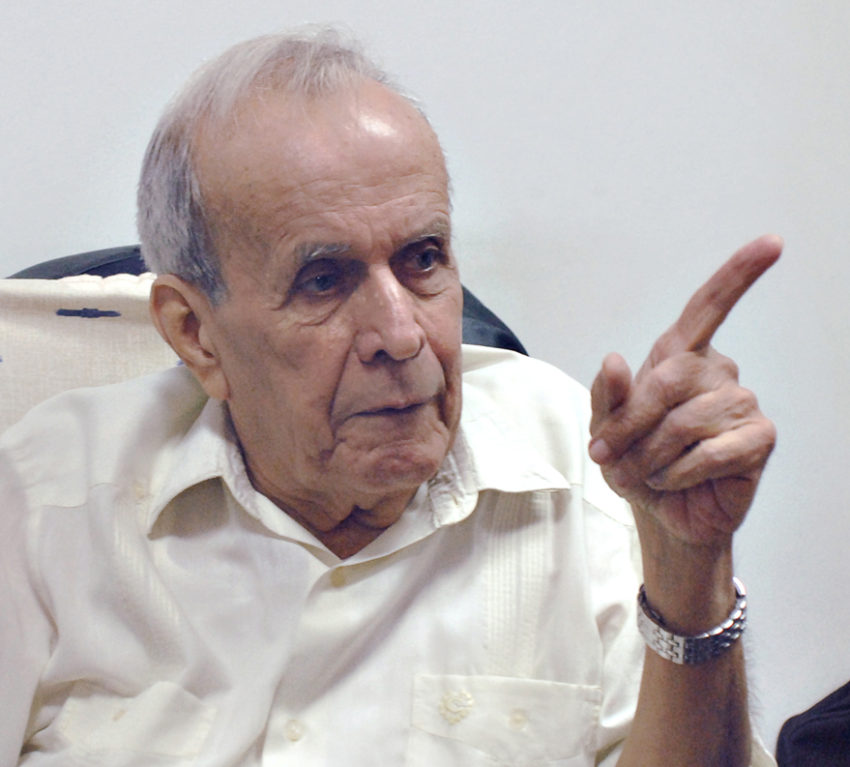English Language Sources 24
Cuba se mantiene fuerte/strong>
WSJ Magazine
Cuba se mantiene fuerte
El marcado aislamiento de la isla ha sido útil para contener el coronavirus, pero difícil en cuanto a problemática economía. Las andanzas de un fotógrafo capturaron la belleza de Cuba y la resistencia de un pueblo que ha luchado durante mucho tiempo con el flujo y reflujo de la historia.

STOLEN MOMENTOS. Un adolescente de pie en una plaza iluminada por el sol en la Habana Vieja. “La moda está totalmente planificada”, dice el fotógrafo Andrew Jacobs, que visitó Cuba el año pasado. “Cuando haces fotografía callejera es lo contrario. Eso es lo que quería abrazar.” FOTO: ANDREW JACOBS PARA WSJ. MAGAZINE
Por Tony Perrottet
7 de septiembre de 2020 8:21 am ET
Traducido y editado por Walter Lippmann para CubaNews.
Mil gracias a Pedro Gellert por su indispensable ayuda en esta traducción.
Cuando los viajes internacionales comenzaron a cerrarse en marzo debido a la pandemia de coronavirus, Collin Laverty tuvo que tomar una decisión repentina: ¿Miami o La Habana? Para un norteamericano que divide su tiempo entre las dos ciudades mientras dirige Cuba Educational Travel, una agencia que en tiempos menos restringidos contaba entre su clientela con senadores estadounidenses y luminarias del mundo de la tecnología, la elección era obvia. “Sentí que los cubanos iban a hacer un mejor trabajo”, explicó por teléfono desde La Habana. “Estaría más seguro aquí.”
Se ha demostrado que Laverty tenía razón. Mientras la situación se ha deteriorado este verano en Florida -una población de 21,5 millones con casi 10.000 muertes, o 46 por cada 100.000 habitantes- la isla cubana de 11,3 millones de habitantes había registrado a mediados de agosto 88 fallecimientos, o menos de una muerte por cada 100.000. A pesar del pequeño brote ocasional en las provincias, la isla informaba muchos días con cero casos nuevos o con pocos como para contarlos con los dedos de una sola mano.
El éxito de Cuba fue el resultado de una respuesta de libro de texto: Las autoridades sanitarias (que habían estado en constante diálogo con la Organización Mundial de la Salud desde enero) cerraron el país, suspendieron los vuelos internacionales, llevaron a cabo amplias pruebas, aislamiento y rastreo e impusieron el uso de cubrebocas, un proceso sin duda más fácil en un sistema autoritario.
 Una guagua [autobús] en una carretera de Pinar del Río, una provincia al oeste de La Habana.
Una guagua [autobús] en una carretera de Pinar del Río, una provincia al oeste de La Habana.
FOTO: ANDREW JACOBS PARA WSJ. MAGAZINE
“Es una cultura diferente”, dice Laverty. “Si los funcionarios de salud te dicen que es mejor usar un cubreboca, usas un cubreboca. Y a diferencia de los EE.UU., no hay medios alternativos que le digan a la gente que no use un cubreboca”.
Aunque el sistema de salud de Cuba está plagado de escases crónicas, la capacidad de su fuerza laboral médica le ha servido bien durante la pandemia. Cuba tiene el porcentaje más alto de médicos per cápita que cualquier otro país del mundo, y están capacitados para dar una respuesta comunitaria rápida a los huracanes y otros desastres naturales. “Había médicos y enfermeras en bata de laboratorio que llamaban a la puerta una o dos veces al día, para registrarse”, dice Laverty.
La otra cara de la moneda es que la crisis ha castigado a una economía que ya estaba en serios problemas por la mala gestión interna y su desconexión del resto del mundo. Mientras que Cuba ha estado alejada durante seis décadas de su socio comercial natural, los Estados Unidos, a través de un embargo comercial conocido en la isla como “el bloqueo”, el Covid-19 ha llevado el aislamiento del país a nuevos extremos. El cierre de un día para otro de la industria del turismo, la principal fuente de divisas de Cuba, ha llevado el desempleo y la escasez de alimentos a niveles nunca vistos desde el “período especial” de hace 30 años, cuando el colapso de la Unión Soviética y el fin de sus subsidios económicos dejaron a la isla varada y empobrecida.

Pescadores de la época de la adolescencia en un puerto deportivo cerca de La Habana. Las 3.500 millas de costa cubana bañadas por cálidas aguas tropicales han ofrecido un respiro durante las décadas de aislamiento. FOTO: ANDREW JACOBS PARA WSJ. MAGAZINE
Cuba ha dado algunos pasos tentativos hacia la reapertura al turismo. Se han destinado cinco arenosos cayos septentrionales para recibir vuelos chárter, donde los visitantes extranjeros serán sometidos a pruebas de detección del virus a su llegada y alojados en centros turísticos de playa lejos del resto de la población. Hasta ahora, ha habido pocos viajeros. Los canadienses hambrientos de sol, el mercado objetivo lógico, han sido desalentados por su gobierno a viajar al extranjero, y los europeos también están nerviosos por aventurarse lejos de casa. Los locales también son cautelosos: “Los cubanos han sacrificado mucho”, dice Laverty. “Saben que tan pronto como se abran existe el riesgo de una segunda ola”.
Un posible resquicio de esperanza es que la crisis ha empujado al presidente Miguel Díaz-Canel a reiniciar las reformas de la economía estatal, un proceso que había comenzado bajo el mandato de Fidel Castro en 2011 pero que se estancó hace tres años debido a la resistencia de los partidarios de la línea dura del gobierno. El anuncio se hizo a mediados de julio; los detalles siguen siendo vagos, pero la idea es fomentar la empresa privada y la agricultura y reducir la regulación gubernamental. “Es una noticia muy positiva, pero también hay mucho escepticismo”, dice Laverty. “Todo el mundo está esperando a ver qué pasa”.
La pandemia es sólo el último capítulo de la montaña rusa de Cuba desde la revolución de 1959: períodos de grandes esperanzas seguidos de desilusiones. Como resultado, hacer frente al incierto flujo y reflujo de la historia se ha convertido en una especie de especialidad cubana, una resistencia que permite a su pueblo sobrevivir a desafíos que podrían haber sido aplastantes en otros lugares.

YENDO ESPIRAL Una escalera en la Habana Vieja. Años de abandono han añadido una pátina a la arquitectura vernácula de la ciudad. FOTO: ANDREW JACOBS PARA WSJ. MAGAZINE
Este espíritu fue capturado por otro observador de Cuba, el fotógrafo neoyorquino Andrew Jacobs, que exploró la isla en el verano de 2019, sin saber que la pandemia pronto daría mayor resonancia a su trabajo. Al igual que muchos estadounidenses (emigró a los Estados Unidos desde Sudáfrica a los 13 años), Jacobs visitó Cuba por primera vez tras el llamado deshielo de Obama, un delirante espasmo de optimismo que parece hoy en día historia antigua. La reapertura de las relaciones diplomáticas entre Cuba y los EE.UU. en 2014 llevó a una escena improbable tras otra: El presidente Obama de gira por La Habana y asistiendo a un partido de béisbol con Raúl Castro; los Rolling Stones jugando ante una multitud masiva al aire libre; se aflojan las restricciones de viaje de los Estados Unidos que habían estado vigentes desde la época de Eisenhower; y dentro de Cuba, nuevos negocios individuales que convierten a la isla en una fiesta elegante y a la vez desgtastada.
Para los observadores veteranos de Cuba, las nuevas posibilidades estaban simbolizadas por el Bar Roma, una asociación entre un DJ local y un yanqui expatriado que se ocultaba en la azotea de un decrépito edificio de apartamentos art decó en la Habana Vieja. Encontrado de boca en boca, se calificaba como el Estudio 54 de Cuba: Desde el desmoronado vestíbulo, un ascensor de jaula operado a mano crepitaba hacia arriba sobre ruedas sin engrasar, y luego se abría a una multitud felliniesca de jóvenes fashionistas de La Habana y extranjeros conocidos que bailaban sobre los tejados coloniales iluminados por la luna. El co-director cubano, Alain Medina, señaló el lugar del suelo de baldosas donde nació. Para visitar un baño, los invitados le pasaban dinero a uno de los residentes del último piso y luego pasaban por delante del sofá mientras la familia se sentaba y veía la televisión.
Fue esta atmósfera eufórica la que cautivó a Jacobs, nacido en Johannesburgo, cuando una tarea periodística repentina e improvisado a principios de 2017 lo transportó de Nueva York a La Habana a través de uno de los nuevos vuelos directos de JetBlue. El rodaje comercial de los trajes de baño de Onia duró menos de una semana y no le llevó más lejos de la capital que las playas locales, pero quedó asombrado por lo que encontró. “Me cautivó lo vibrante que era Cuba”, recuerda. “Era muy visceral. Dejé de querer fotografiar a las modelos con las que estaba. Quería fotografiar a la gente en la calle.”
Cuba se mantiene fuerte
El marcado aislamiento de la isla ha sido útil para contener el coronavirus, pero difícil en cuanto a problemática economía. Las andanzas de un fotógrafo capturaron la belleza de Cuba y la resistencia de un pueblo que ha luchado durante mucho tiempo con el flujo y reflujo de la historia.

EN COLOR VIVO Artículos colgando para secar en la lavandería de un edificio de apartamentos en La Habana. REVISTA

Un mecánico de autos fuera de su lugar de trabajo.

Fruta en venta en un mercado de La Habana.

A guajiro, or Cuban campesino, in Pinar del Rio. WSJ MAGAZINE
Jacobs juró volver de forma independiente para documentar la nueva Cuba. Cuando finalmente lo hizo, en junio de 2019, el curso de la historia había cambiado de rumbo otra vez. Los EE.UU. invirtió el deshielo de Obama, endureciendo las sanciones económicas y volviendo el reloj a la Guerra Fría. La belicosa retórica del presidente Trump había asustado a la mayoría de los viajeros americanos, y las reformas del sistema socialista de Cuba se habían estancado. Cuando Jacobs se puso en contacto con Talía Bustamante, una productora de La Habana a la que había conocido en su anterior visita, llevaba más de un año luchando por encontrar un trabajo estable, al igual que su marido, Alejandro Callejas, un operador de cámara. Como para simbolizar el nuevo frío, el Bar Roma pronto cerraría sus puertas, después de una disputa entre los co-directores cubano y americano. “Fue muy difícil para los cubanos”, dice Laverty, cuya propia empresa había traído a muchos empresarios estadounidenses al país para investigar las oportunidades. “Eran la comidilla del mundo, este lugar guay y sexy; luego les dieron una serie de golpes en el cuerpo.”
Jacobs descubrió que, a pesar de este giro que truncaba muchas esperanzas, la vitalidad que lo había atraído primero a la isla seguía intacta. Generaciones de tumultos y reveses han enseñado a los cubanos a apreciar el adagio “Las mejores cosas de la vida son gratis”. Tienen la bendición de vivir en una isla tropical con 3.500 millas de costa, bosques exuberantes, playas de arena y un clima benigno. Este ambiente acogedor ha ayudado a fomentar la vida comunitaria, que, tras el paréntesis de las restricciones de Covid-19, ha empezado a recuperarse. Los cubanos siguen desparramándose por las esquinas, tocando música con instrumentos improvisados, bromeando entre ellos sobre sus políticos y disfrutando de la sensualidad de las tardes con aroma a azúcar. Dependen de recursos de ingenio y humor conversacional hasta un punto que otras culturas, inundadas por la tecnología, han abandonado. La Habana Vieja colonial puede estar desmoronándose, con un aire tangible de privación a la vuelta de la esquina de las zonas que han sido embellecidas para los turistas, pero muchos residentes se conocen por su nombre. Los adolescentes a veces se agrupan a lo largo del Malecón, el paseo marítimo de la ciudad, para compartir una botella de ron y bailar bajo las duchas de rocío marino.
Para capturar este espíritu, Jacobs se propuso explorar la capital a pie, con el azar y el capricho de su única agenda, caminando, hablando y conociendo gente mientras Bustamante servía de guía y traductor. Durante su viaje de 2019, fue estimulante renunciar a todo lo que se parezca a un programa de rodaje. “La moda está completamente planeada”, dice. “Cuando haces fotografía de calle es lo contrario. Eso es lo que quería abrazar.”
Un día, se encontraron con una pequeña liga de béisbol [little league] en la que los jugadores llevaban zapatos de gran tamaño y uniformes de segunda mano. Como neoyorquino, Jacobs fue recibido como una celebridad. “Los niños estaban tan emocionados que no podían quedarse quietos ni mirarme durante mucho tiempo”, dice.
Cuba is Staying Strong
El marcado aislamiento de la isla ha sido útil para contener el coronavirus, pero difícil en cuanto a problemática economía. Las andanzas de un fotógrafo capturaron la belleza de Cuba y la resistencia de un pueblo que ha luchado durante mucho tiempo con el flujo y reflujo de la historia.

CIELO AZUL Las jaulas de pájaros cuelgan de una pared en Playa.ANDREW JACOBS para el WSJ. MAGAZINE

Una carretera costera cerca del puerto de La Habana. Dado el bloqueo comercial de EE.UU. durante décadas, los cubanos se han convertido en expertos en el reciclaje de piezas para mantener los coches americanos antiguos.

CARRETERAS SOLIDARIAS Residentes de Santa Fé en Playa, un municipio de La Habana. La economía de Cuba ha tenido dificultades desde los años 90, después de que la Unión Soviética se disolviera y el apoyo se agotara. Las áreas fuera del centro de la ciudad que ven menos turistas han sido especialmente afectadas.

Para explorar las provincias, Jacobs hizo un viaje por carretera a Pinar del Río, al oeste de La Habana. La logística se improvisó al clásico estilo cubano: El marido de Bustamante se apuntó como conductor, y durante los tres días de viaje Jacobs y su ayudante se metieron en el asiento trasero del pequeño vehículo bajo montañas de equipos de cámara. La recompensa fue explorar el Valle de Viñales, donde un mosaico de plantaciones y granjas de tabaco de una exuberancia imposible está enmarcado por espectaculares afloramientos de piedra caliza llamados mogotes (“Como el Parque Jurásico”, dice Jacobs). La hermética sociedad rural tiene un aire de otro mundo: campesinos bañados por el sol con sombreros de paja que cabalgan a caballo pasando por bohíos, chozas de paja, creando escenas tropicales que recuerdan los lienzos de Gauguin.
Las imágenes de Jacobs rara vez incluyen signos reveladores de lugares específicos -no estatuas, catedrales o vistas de postales para turistas- y en cambio se concentran en detalles íntimos. Le atraía especialmente lo que había detrás de las puertas cerradas. La arquitectura hispano-caribeña, con sus balcones de hierro forjado, pórticos cubiertos y ventanas con contraventanas, protege a los residentes del sol pero también desvía las miradas indiscretas. “En las calles, se puede acercar a cualquiera, charlar, reír y tomar fotos”, dice Jacobs. Pero acceder a las casas privadas era un asunto delicado; a muchos les preocupaba que sus circunstancias pudieran ser juzgadas por un extrañjero.
En realidad, Jacobs era lo opuesto a juzgar, ya que se vio envuelto en la poesía casual de la vida doméstica de los cubanos. “La gente no tiene mucho, pero es hermoso”, dice. “La luz, la forma en que arreglan las cosas, el uso del color. Los cubanos sacan lo mejor de lo que tienen.”

Un lago de montaña. FOTO: ANDREW JACOBS PARA WSJ. MAGAZINE
Los cubanos son legendarios por la creatividad que aplican a los bienes materiales. Sin acceso a las nuevas piezas mecánicas, son expertos en el reciclaje, con Chevrolets, Dodges y Buicks de los años 50 reconfigurados para durar décadas más allá de su vida natural, a veces con motores Toyota bajo el capó, con cables que sostienen las ventanas agrietadas o con tablones de madera usados como tablas del suelo. Pero el acceso a los lujos más retro se desgasta en las provincias. Muchas de las aldeas que Jacobs visitó exudaban un aire fantasmal.
Típico era el puesto de avanzada de Hershey (hoy conocido como Camilo Cienfuegos), aproximadamente a 35 millas de La Habana, un pueblo fundado en 1916 para proveer de azúcar a la compañía de chocolate con sede en Pennsylvania. Las calles estaban antaño bordeadas de ordenados bungalows que hacían eco de las ciudades modelo de los suburbios americanos -un mundo desaparecido capturado en la novela de Rachel Kushner de 2008, Telex desde Cuba. Cuando la refinería fue nacionalizada después de la revolución, la ciudad siguió funcionando mientras la URSS compró la cosecha de azúcar de Cuba a un precio inflado. “Era como un pueblo del Viejo Oeste en pleno auge del oro”, dice Jacobs. Hoy en día, la refinería cerrada se cierne como una catedral en ruinas sobre calles habitadas sólo por ancianos.

La provincia de Pinar del Río, a unos 160 km al oeste de La Habana, es el centro agrícola de la industria tabacalera cubana. Arriba: Un bohío, o cabaña de paja. FOTO: ANDREW JACOBS PARA WSJ. MAGAZINE
Para esta generación mayor, los sueños fracturados de Cuba en la última década tienen un aire familiar, que se hace eco de ciclos históricos más largos de esperanza y decepción. Al principio, la llegada de Fidel Castro y sus románticos barbudos (“los barbudos”, como se conoció a sus guerrilleros en la Sierra Maestra) fueron recibidos con un éxtasis. Toda la isla se vio envuelta en el cuento de hadas “revolución juvenil” contra el brutal dictador Fulgencio Batista, mientras Cuba se embarcaba en un experimento que parecía prometer una utopía política, económica y racial. Con el paso de los años, la desilusión se instaló, y el sueño se derrumbó en la década de 1990.
Aún así, dentro de la Cuba de hoy, la esperanza continúa. “Si todo se alinea, Cuba estará en un buen lugar”, dice Laverty. “Pero para llegar allí, tendrán que lidiar con muchas dificultades.” Como siempre, los cubanos tendrán mucha experiencia en la que apoyarse. -•
Betty Dodson: The Soothsayer of Solo Sex.
The New York Times
You Are Your Safest Sex Partner. Betty Dodson Wants to Help.
By Ruth La Ferla.
March 26, 2020
Translated by CubaNews

Credit: Celeste Sloman for The New York Times
What does it take to make Gwyneth Paltrow blush? Well, it just happens to take a few explicit lessons on how to tune her pelvic floor. Her instructor, Betty Dodson, an artist turned sex educator and evangelist of female self-stimulation, extolled the benefits of Kegelian exercise, which she says helps bring about orgasm.
“Lift, contract, relax,” she insisted, causing Mrs. Paltrow, seller of a $75 candle called This Smells Like My Vagina, to blush from her chin to her forehead.
The scene is from “The Goop Lab,” a Netflix installment on the Paltrow’s (popular among millennials) life regimen business that marked a milestone for the Dodson, giving her more visibility and possibly more relevance than she’s enjoyed since she began teaching women how to achieve orgasm half a century ago.
“There are younger women educators now,” said Annie Sprinkle, a porn star from the 1970s who became a sex educator and a longtime disciple of Dodson, “but Betty can still give them two turns.
A troublemaker since before the term became fashionable, Ms. Dodson has gained adherents to her ideal of positive sex for decades, urging attendees at the Bodysex workshops she founded in the 1970s to sit naked on her carpeted floor, watch each other’s vulvas and learn how to masturbate effectively.
Even before the New York City Health Department stated “you are your safest sex partner” in a highly publicized memo, Ms. Dodson, now 90, was enjoying a timely renaissance. Her message is echoed in her first manual, “Bodysex Basics,” co-authored by Carlin Ross, and in a reprint of her 2010 memoir, “Sex by Design: The Betty Dodson Story: The Betty Dodson Story]; in the popular monthly workshops she offers in her Midtown Manhattan apartment (now replaced by online group discussions); in the erotic art that first caught the public’s attention (her images of couples copulating, which will be on display this year when the Museum of Sex, of which she is a consultant, reopens); and in www. dodsonandross.com, the website she maintains with Ms. Ross, her business associate and alleged 46-year-old heir.
In “The Goop Lab,” Mrs. Ross lies face down in the half-light of a room. Dodson is on top of her, gently applying oil to her genitals using a gradually accelerating massage technique, and whispering softly as he guides Mrs. Ross to an eventual climax.
If the earth trembled for Mrs. Ross, it was not noticed. Aside from her shaky breathing and the occasional shudder, the audience saw and heard nothing like the sound and visual fireworks that have always been the mainstay of heterosexual pornography.

The accusations were false. But could we prove it?
If it seemed dull by comparison, Ross said, “it’s because it wasn’t an acting orgasm.”
Before the spread of the new coronavirus that forced New Yorkers to isolate themselves, she was chatting in the office-bedroom where they both write and plan their projects.
A golden penis with wings, one of Ms. Dodson’s many curious awards, takes pride of place on one of the top shelves of a bookcase full of videotapes she has promoted-such as “Viva la Vulva”-and several of her early works, including “Sex for One: The Joy of Self-Love,” her landmark first manual (1987) on female masturbation.

Credit: Celeste Sloman for The New York Times
Work tools: Magic Wand Vibrators that Ms. Dodson uses in her workshops
The Dodson made her entrance dressed in a gangly bathrobe whose top pocket is decorated with the letters B.A.D., “my initials, Betty Anne Dodson,” she said squinting before returning to her song.
Of course, the orgasm can be noisy at times. “However, the sounds are usually much more guttural, deep and animalistic,” she said. “The legs shake, the whole body trembles. I’ve never seen that in pornography.”
Why then do so many women feel compelled to put on a show enriched by a soundtrack of moaning and heartbreaking screams? “Men don’t want to see a real orgasm, they want porn,” the Dodson pointed out with a sharp edge. “It’s an ego thing. They want to see the kind of effect they have on a woman.”
“A real orgasm,” he added, leaning forward for emphasis, “no matter where it comes from, it’s something that women get.”
Here is a basic precept of his teachings. “You must lead” intercourse, he asks women earnestly: Take charge, that is, actively participate in your own pleasure. If you are with a partner, “Take her to do what you want,” he said almost angrily. “Find the position you want.”
In his opinion, masturbation, whether manual or with battery-powered devices, is the cornerstone of sexual fulfillment, a catalyst for pleasure, and, more than that, the reliable basis for social and emotional independence.
“My instinct told me,” he writes in his monograph, “that sexual mobility was the same as social mobility. Men had it and women didn’t.”
Her commanding, subversive and even inflammatory attitude of the early 1970s did not sit well with some feminists who considered Mrs. Dodson’s notion of mating to be mechanical and unconnected. Moreover, they were too focused on protesting the abuse and humiliation they suffered at the hands of men. “They were always complaining,” she recalled with irritation.

Credit: Celeste Sloman for The New York Times
Other trifles about the Dodson’s bureau.
Shee responded, unflappable, with a model of sexual awareness. The total repudiation of romantic love was vital to his message. “Romance is a very serious thing,” he said in his apartment. “It’s no longer that paradigm that I have to love you and you have to love me back.”
Ms. Ross intervened: “Sex can be playful, more like, ‘Let’s have fun.'”
Ms. Dodson’s epiphany came after a lurid and sexually uninspiring marriage in the early 1960s to Frederick Stern, an advertising manager. The couple did not have children, and the Dodson, who grew up with three brothers and sisters, did not have them in her future plans either. “I saw what my mother went through,” he said. “It’s the most thankless task on the planet.”
Being free to experiment, he explored group sex with women and men, in order, he said in a 1970 New York Times interview, to give up feelings of jealousy and possessiveness “to understand that I could love more than one person.
In time, she became disillusioned. “Organized group sex is kind of like the children’s league of bowling,” she said at the time. “It’s super-compulsive, with frenetic traits. It’s weird.”
She used the small amount she received from her divorce to fund the first of the women’s sex workshops that would become her livelihood and vocation. At these meetings she encouraged the often nervous participants to strip down, discover their bodies and adopt practices that included clitoral massage and the use of the Magic Wand, the hard-to-handle but highly effective vibrator she promotes and sells through her website, Dodson & Ross.
Her short gray hair and wise demeanor invite comparison with Dr. Ruth Westheimer, the cozy and entertaining sex guru of the 1980s. The Dodson doesn’t accept it. “Dr. Ruth is your grandmother with a funny accent,” she likes to say. “You never listen to what she says.”
The comparison is accurate… to a certain extent, Mrs. Sprinkle said. “With Dr. Ruth there are no risks, while Betty is nervous, a permanent explorer of sexuality. She has the kind of experiences even her youngest followers will never have.”
Mrs. Dodson, an artist to the core, has cultivated a character that fluctuates between the rough and the smooth, and sometimes knows how to be mockingly funny. Since her doctor declared her healthy last month after a routine check-up, she started smoking for the first time in years.
“Why not?” she said with a snort, “I’m going to live forever.” But when Ross suggested that I was free to light a cigarette whenever I wanted, she was upset. “I’ll decide when to smoke.”
Mrs. Dodson’s teachings, innovative in their time, are unlikely to frighten young women who grew up watching pop idols like Miley Cyrus, Nicki Minaj and others who are suggestively caressed in both their videos and concerts.
Also, the lyrics of their songs make self-stimulation seem as normal as going out and shopping. “Oh what an ordinary day,” sings Annie Clark, known professionally as St. Vincent, in her single “Birth in Reverse” (2014). “Take out the trash, masturbate…”
Young people can immediately turn to online guides such as “How to Masturbate, Female Style: 8 Steps to Having Orgasms” in Bustle, with handy instructions, as the author writes, “because knowing several ways to have an orgasm is a skill everyone should have.
Similar naturalness supports the somewhat simplistic claim of Flo Perry, a 27-year-old British writer and illustrator, in “How to Have Feminist Sex: A Fairly Graphic Guide,” that masturbation is not much more than “a form of self-care.
However, some of the younger girls seem to prefer Ms. Dodson’s manual approach (if you’ll excuse me). The lessons she offers on the Internet have many clients, about half of whom are between 24 and 40 years old, according to Ms. Ross. Few can respond to the outpouring of anger that characterizes Dodson’s writing and fuels her conversation.
In her paper, she recalls the case of an older friend who made a touching suggestion to her best friend. The Dodson grabbed a knife from above the cutting board and angrily said, “You better leave before I stick this knife in your stomach.”
In other cases, however, Mrs. Dodson seems inexplicably cooperative. In her writing she describes an encounter in her backyard with a half-naked stranger, who approached her threateningly from behind. Feeling that the man was about to pounce on her, she turned around, unbuckled her seatbelt, pushed him into a chair and rode on top of him.
It’s an amazing incident to read about, especially in the era of #MeToo, when Dodson’s seemingly cavalier attitude sounds like heresy. But she’s not willing to back down. “If you don’t know martial arts,” she says, resisting a man during an attack “is useless in most cases. Men are bigger and stronger. I don’t care how many reasons you have: fighting doesn’t work.”
Your relationship with the more robust sex can be sourly dismissive. “Men are very two-dimensional,” he said. “If there’s anything interesting about them, it’s the women they’ve been with.”
Ms. Ross reminded the Dodson that at the age of seventy-something she had a 25-year-old lover, with whom she lived for a decade. For Mrs. Dodson, the memory still sparks.
“He was so beautiful,” she said amidst nostalgic sucking on a Marlboro Light. “He had the perfect body, broad shoulders, good-sized genitals and strong bones. Oh, and he smelled so good! With that youth and lots of soap and water.”
“I’m done with partner sex,” he continued. “But I wouldn’t turn down a good-looking guy if he came in here now.”
Not having a partner is no reason to leave the field, he added, as if such a thing, confiding in me that he still smokes marijuana occasionally (“Without it I wouldn’t be here.”), sometimes as a prelude to casual sex alone. There’s no point in lying around idly waiting for desire to take over.
“We feel the desire once we get aroused,” he said. “Don’t wait for your spirit to move you, because it never will.”
A version of this article is printed on March 26, 2020 in Section D, Page 1 of the New York edition, under the title: The Soothsayer of Solo Sex. Order Copies : Today’s Newspaper : Subscribe
Betty Dodson: La adivina del sexo en solitario.
The New York Times
Betty Dodson: La adivina del sexo en solitario.
“Un orgasmo de verdad,” dijo la Sra. Dodson, “no importa de dónde venga, es algo de lo que se apropia la mujer.”
Por: Ruth La Ferla
26 de marzo 2020
Translation to Spanish by CubaNews. Traducción dedicada a Mileyda Menéndez y al Dr. Alberto Roque Guerra.

Crédito: Celeste Sloman para The New York Times.
¿Qué hace falta para hacer ruborizar a Gwyneth Paltrow? Pues resulta que basta con algunas clases explícitas sobre cómo entonar su suelo pélvico. Su instructora, Betty Dodson, artista convertida en educadora sexual y evangelista de la auto-estimulación femenina, exaltaba los beneficios del ejercicio kegeliano que, según sostiene, ayuda a provocar el orgasmo.
“Levanta, contrae, relaja,” insistía, causando que la Sra. Paltrow, vendedora de una vela de $75 llamada This Smells Like My Vagina [Esto Huele Como Mi Vagina] enrojeciera desde el mentón hasta la frente.
La escena es de “The Goop Lab,” una entrega de Netflix sobre el negocio de régimen de vida de la Paltrow (popular entre los ‘millennials’) que marcó un hito para la Dodson, pues le dio más visibilidad y, posiblemente, más relevancia de la que ha disfrutado desde que comenzó hace medio siglo a enseñar a las mujeres a alcanzar el orgasmo.
“Ahora hay educadoras más jóvenes,” dijo Annie Sprinkle, estrella porno de la década de 1970 devenida educadora sexual y desde hace mucho discípula de Dodson, “pero Betty todavía les puede dar dos vueltas.”
La Sra. Dodson, una perturbadora desde antes de que el término se pusiera de moda, ha ganado adeptas a su ideal de sexo positivo durante décadas, exhortando a las asistentes a los talleres Bodysex que fundó en los 70 a sentarse desnudas en su piso alfombrado, observarse mutuamente sus vulvas y aprender a masturbarse con eficacia.
Incluso antes de que el Dpto. de Salud de Nueva York afirmara “you are your safest sex partner” [Tú eres tu pareja sexual más segura] en un memo muy publicitado, la Sra. Dodson, que ya tiene 90 años, disfrutaba de un oportuno renacer. Su mensaje se hace sentir en su primer manual, “Bodysex Basics” [Fundamentos del Bodysex], con Carlin Ross como coautor, y en una versión reeditada de sus memorias de 2010, “Sex by Design: The Betty Dodson Story” [Sexo Intencional: La Historia de Betty Dodson]; en los populares talleres mensuales que ofrece en su apartamento de Midtown Manhattan (actualmente sustituidos por charlas colectivas por Internet); en el arte erótico que captó la atención del público por primera vez (sus imágenes de parejas copulando, que se exhibirán este año cuando el Museo del Sexo, del cual es consultora, reabra sus puertas); y en www.dodsonandross.com, la página web que mantiene junto con la Sra. Ross, su asociada comercial y presunta heredera de 46 años.
En “The Goop Lab,” la Sra. Ross yace bocabajo en la penumbra de un cuarto. Dodson está encima de ella, aplicándole suavemente aceite en los genitales mediante una técnica de masaje que se acelera gradualmente, y susurrando dulcemente mientras guía a la Sra. Ross hacia un eventual clímax.
Si la tierra tembló para la Sra. Ross, no se notó. Aparte de su respiración agitada y algún que otro estremecimiento por momentos, el auditorio no vio ni escuchó nada parecido a los fuegos artificiales sonoros y visuales que desde siempre han sido el puntal de la pornografía heterosexual.
Las Acusaciones Eran Falsas. Pero, ¿Podíamos Probarlo?

Si pareció insulso por comparación, dijo la Ross, “es porque no fue un orgasmo actuado.”
Antes de la propagación del nuevo coronavirus que obligó a los neoyorquinos a auto-aislarse, ella estaba chateando en la oficina-dormitorio donde ambas escriben y planifican sus proyectos.
Un pene dorado con alas, uno de los diversos premios curiosos de la Sra. Dodson, ocupa el lugar de honor en uno de los estantes superiores de un librero lleno de videocasetes que ella misma ha promovido—tales como “Viva la Vulva”—y de varios de sus trabajos iniciales, incluyendo “Sex for One: The Joy of Self-Loving” [Sexo para Uno: El Goce del Auto-amor], su trascendental primer manual (1987) sobre la masturbación femenina.
Herramientas de trabajo: Vibradores Magic Wand [Varita Mágica] que la Sra. Dodson utiliza en sus talleres.

Crédito: Celeste Sloman para The New York Times
La Dodson hizo su entrada vestida con una bata de baño desgarbada cuyo bolsillo superior está decorado con las letras B.A.D., “mis iniciales, Betty Anne Dodson,” dijo entornando los ojos antes de retomar su tema.
Claro que sí, el orgasmo puede ser ruidoso en ocasiones. “Sin embargo, por lo general los sonidos son mucho más guturales, profundos y animalistas,” afirmó. “Las piernas tiemblan, el cuerpo entero tiembla. Eso nunca lo he visto en pornografía.”
¿Por qué entonces tantas mujeres se sienten obligadas a montar un espectáculo enriquecido con una banda sonora de gemidos y gritos desgarradores? “Los hombres no quieren ver un orgasmo de verdad, quieren el pornográfico,” señaló la Dodson con mordacidad. “Es cosa del ego. Quieren ver el tipo de efecto que causan en una mujer.”
“Un orgasmo de verdad,” agregó, inclinándose hacia adelante para mayor énfasis, “no importa de dónde venga, es algo de lo que se apropia la mujer.”
He ahí un precepto básico de sus enseñanzas. “Tienen que dirigir” el coito, le pide a las mujeres encarecidamente: Asuman el mando, o sea, participen activamente en su propio placer. Si están con una pareja, “Llévenla a hacer lo que ustedes quieren,” dijo casi con furia. “Busquen la posición que ustedes quieren.”
En su opinión, la masturbación, sea manual o con dispositivos de baterías, es la piedra angular de la realización sexual, un catalizador del placer, y, más que eso, la base fiable de la independencia social y emocional.
“Mi instinto me dijo,” escribe en su monografía, “que movilidad sexual era lo mismo que movilidad social. Los hombres la tenían y las mujeres no.”
Su actitud de mando, subversiva e incluso incendiaria de principios de los años 70, no les sentó muy bien a algunas feministas que consideraban la noción de la Sra. Dodson sobre el apareamiento como mecánica y carente de conexión. Además, estaban demasiado concentradas en protestar por los abusos y las humillaciones que sufrían por obra de los hombres. “Siempre se estaban quejando,” recordó con irritación.
Otras fruslerías sobre el buró de la Dodson.

Crédito: Celeste Sloman para The New York Times
Respondió, imperturbable, con un modelo de concientización sexual. El repudio total al amor romántico era vital para su mensaje. “El romance es algo muy serio,” dijo en su apartamento. “Ya no es ese paradigma de que yo tengo que amarte y tú tienes que corresponderme.”
La Sra. Ross intervino: “El sexo puede ser juguetón, algo más parecido a, ‘Vamos a divertirnos.’”
Los jóvenes pueden enseguida a guías en la Internet tales como “How to Masturbate, Female Style: 8 Steps to Having Orgasms” [Cómo Masturbarse al Estilo Femenino: 8 Pasos para Tener Orgasmos] en Bustle, con instrucciones a mano, según escribe la autora, “porque conocer varias formas de producirse un orgasmo es una habilidad que todo el mundo debería tener.” Similar naturalidad respalda la afirmación un tanto simplista de Flo Perry, escritora e ilustradora británica de 27 años, en “How to Have Feminist Sex: A Fairly Graphic Guide” [Cómo Tener Sexo Feminista: Una Guía Bastante Gráfica], al afirmar que la masturbación no consiste en mucho más que “una forma de cuidado personal.”
No obstante, algunas de las más jóvenes parecen preferir el enfoque manual (si me perdonan) de la Sra. Dodson. Las lecciones que ofrece en la Internet tienen muchísimos clientes, de las cuales aproximadamente la mitad tienen entre 24 y 40 años, según la Sra. Ross. Pocas pueden responder al caudal de furia que caracteriza a los escritos de la Dodson y caldea su conversación.
Ella recuerda en su monografía el caso de una amiga de más edad que se le insinuó con manoseos a su mejor amiga. La Dodson agarró un cuchillo de encima de la tabla de cortar y le dijo con rabia, “Mejor vete antes de que te clave este cuchillo en el estómago.”
Sin embargo, en otros casos, la Sra. Dodson parece inexplicablemente cooperativa. En su escrito describe el encuentro en su patio trasero con un extraño semidesnudo, que se le acercó amenazadoramente por detrás. Sintiendo que el hombre estaba a punto de abalanzarse sobre ella, se dio vuelta, se zafó el cinturón, lo empujó hacia una silla y se le montó encima.
Es un incidente sorprendente de leer, sobre todo en la era del #MeToo, cuando la actitud aparentemente displicente de la Dodson suena a herejía. Pero ella no está dispuesta a retractarse. “Si Ud. no sabe artes marciales,” afirma, resistirse a un hombre durante un ataque “es inútil en la mayoría de los casos. Los hombres son más grandes y más fuertes. No me importa cuántas razones tiene Ud.: pelear no da resultado.”
Su relación con el sexo más fornido puede ser agriamente despectiva. “Los hombres son muy bidimensionales,” señaló. “Si algo tienen de interesantes es por las mujeres con las que han estado.”
La Sra. Ross le recordó a la Dodson que a la edad de setenta y tantos tuvo un amante de 25 años de edad, con quien vivió durante una década. Para la Sra. Dodson, el recuerdo aún despide chispas.
“¡Era tan bello!,” dijo entre nostálgicas chupadas a un Marlboro Light. “Tenía el cuerpo perfecto, hombros ancho, genitales de buen tamaño y huesos fuertes. ¡Ah, y olía muy bien! Con esa juventud y mucha agua y jabón.”
“Ya terminé con el sexo en pareja,” continuó. “Pero no rechazaría a un tipo bien parecido si entrara aquí ahora.”
No tener pareja no es motivo para abandonar el terreno, agregó, como si tal cosa, confiándome que todavía fuma marihuana ocasionalmente (“Sin ella no estaría aquí.”), a veces como preludio del sexo casual en solitario.
No tiene sentido recostarse a esperar ociosamente a que el deseo me tome la delantera.
“Sentimos el deseo una vez que nos excitamos,” dijo. “No esperes a que tu espíritu te mueva, porque nunca lo hará.”
Una versión de este artículo aparece impreso el 26 de marzo de 2020 en la Sección D, Página 1 de la edición de Nueva York, con el título: The Soothsayer of Solo Sex [La Adivina del Sexo en Solitario]. Solicite Copias | Periódico de Hoy | Suscríbase
https://www.academia.edu/28136066/Betty_Dodson_Sexo_para_uno
The Cuba Embargo Needs To Go
Hillary Clinton: The Cuba Embargo
Needs To Go, Once And For All
July 31, 2015

Hillary Clinton makes a speech on Cuban relations at Florida International University in Miami, Florida, on Friday. Photograph: Joe Skipper/Reuters
In Miami today, Hillary Clinton forcefully expressed her support for normalization of U.S. relations with Cuba and formally called on Congress to lift the Cuba embargo. Hillary emphasized that she believes we need to increase American influence in Cuba, not reduce it — a strong contrast with Republican candidates who are stuck in the past, trying to return to the same failed Cold War-era isolationism that has only strengthened the Castro regime.
To those Republicans, her message was clear: “They have it backwards: Engagement is not a gift to the Castros – it’s a threat to the Castros. An American embassy in Havana isn’t a concession – it’s a beacon. Lifting the embargo doesn’t set back the advance of freedom – it advances freedom where it is most desperately needed.”
A full transcript of the remarks is included below:
“Thank you. Thank you very much. Thank you. I want to thank Dr. Frank Mora, director of the Kimberly Latin American and Caribbean Center and a professor here at FIU, and before that served with distinction at the Department of Defense. I want to recognize former Congressman Joe Garcia. Thank you Joe for being here – a long time friend and an exemplary educator. The President of Miami-Dade College, Eduardo Padrón and the President of FIU, Mark Rosenberg – I thank you all for being here. And for me it’s a delight to be here at Florida International University. You can feel the energy here. It’s a place where people of all backgrounds and walks of life work hard, do their part, and get ahead. That’s the promise of America that has drawn generations of immigrants to our shores, and it’s a reality right here at FIU.
“Today, as Frank said, I want to talk with you about a subject that has stirred passionate debate in this city and beyond for decades, but is now entering a crucial new phase. America’s approach to Cuba is at a crossroads, and the upcoming presidential election will determine whether we chart a new path forward or turn back to the old ways of the past. We must decide between engagement and embargo, between embracing fresh thinking and returning to Cold War deadlock. And the choices we make will have lasting consequences not just for more than 11 million Cubans, but also for American leadership across our hemisphere and around the world.
“I know that for many in this room and throughout the Cuban-American community, this debate is not an intellectual exercise – it is deeply personal.
“I teared up as Frank was talking about his mother—not able to mourn with her family, say goodbye to her brother. I’m so privileged to have a sister-in-law who is Cuban-American, who came to this country, like so many others as a child and has chartered her way with a spirit of determination and success.
“I think about all those who were sent as children to live with strangers during the Peter Pan airlift, for families who arrived here during the Mariel boatlift with only the clothes on their backs, for sons and daughters who could not bury their parents back home, for all who have suffered and waited and longed for change to come to the land, “where palm trees grow.” And, yes, for a rising generation eager to build a new and better future.
“Many of you have your own stories and memories that shape your feelings about the way forward. Like Miriam Leiva, one of the founders of the Ladies in White, who is with us today – brave Cuban women who have defied the Castro regime and demanded dignity and reform. We are honored to have her here today and I’d like to ask her, please raise your hand. Thank you.
“I wish every Cuban back in Cuba could spend a day walking around Miami and see what you have built here, how you have turned this city into a dynamic global city. How you have succeeded as entrepreneurs and civic leaders. It would not take them long to start demanding similar opportunities and achieving similar success back in Cuba.
“I understand the skepticism in this community about any policy of engagement toward Cuba. As many of you know, I’ve been skeptical too. But you’ve been promised progress for fifty years. And we can’t wait any longer for a failed policy to bear fruit. We have to seize this moment. We have to now support change on an island where it is desperately needed.
“I did not come to this position lightly. I well remember what happened to previous attempts at engagement. In the 1990s, Castro responded to quiet diplomacy by shooting down the unarmed Brothers to the Rescue plane out of the sky. And with their deaths in mind, I supported the Helms-Burton Act to tighten the embargo.
“Twenty years later, the regime’s human rights abuses continue: imprisoning dissidents, cracking down on free expression and the Internet, beating and harassing the courageous Ladies in White, refusing a credible investigation into the death of Oswaldo Paya. Anyone who thinks we can trust this regime hasn’t learned the lessons of history.
“But as Secretary of State, it became clear to me that our policy of isolating Cuba was strengthening the Castros’ grip on power rather than weakening it – and harming our broader efforts to restore American leadership across the hemisphere. The Castros were able to blame all of the island’s woes on the U.S. embargo, distracting from the regime’s failures and delaying their day of reckoning with the Cuban people. We were unintentionally helping the regime keep Cuba a closed and controlled society rather than working to open it up to positive outside influences the way we did so effectively with the old Soviet bloc and elsewhere.
“So in 2009, we tried something new. The Obama administration made it easier for Cuban Americans to visit and send money to family on the island. No one expected miracles, but it was a first step toward exposing the Cuban people to new ideas, values, and perspectives.
“I remember seeing a CNN report that summer about a Cuban father living and working in the United States who hadn’t seen his baby boy back home for a year-and-a-half because of travel restrictions. Our reforms made it possible for that father and son finally to reunite. It was just one story, just one family, but it felt like the start of something important.
“In 2011, we further loosened restrictions on cash remittances sent back to Cuba and we opened the way for more Americans – clergy, students and teachers, community leaders – to visit and engage directly with the Cuban people. They brought with them new hope and support for struggling families, aspiring entrepreneurs, and brave civil society activists. Small businesses started opening. Cell phones proliferated. Slowly, Cubans were getting a taste of a different future.
“I then became convinced that building stronger ties between Cubans and Americans could be the best way to promote political and economic change on the island. So by the end of my term as Secretary, I recommended to the President that we end the failed embargo and double down on a strategy of engagement that would strip the Castro regime of its excuses and force it to grapple with the demands and aspirations of the Cuban people. Instead of keeping change out, as it has for decades, the regime would have to figure out how to adapt to a rapidly transforming society.
“What’s more, it would open exciting new business opportunities for American companies, farmers, and entrepreneurs – especially for the Cuban-American community. That’s my definition of a win-win.
“Now I know some critics of this approach point to other countries that remain authoritarian despite decades of diplomatic and economic engagement. And yes it’s true that political change will not come quickly or easily to Cuba. But look around the world at many of the countries that have made the transition from autocracy to democracy – from Eastern Europe to East Asia to Latin America. Engagement is not a silver bullet, but again and again we see that it is more likely to hasten change, not hold it back.
“The future for Cuba is not foreordained. But there is good reason to believe that once it gets going, this dynamic will be especially powerful on an island just 90 miles from the largest economy in the world. Just 90 miles away from one and a half million Cuban-Americans whose success provides a compelling advertisement for the benefits of democracy and an open society.
“So I have supported President Obama and Secretary Kerry as they’ve advanced this strategy. They’ve taken historic steps forward – re-establishing diplomatic relations, reopening our embassy in Havana, expanding opportunities further for travel and commerce, calling on Congress to finally drop the embargo.
“That last step about the embargo is crucial, because without dropping it, this progress could falter.
“We have arrived at a decisive moment. The Cuban people have waited long enough for progress to come. Even many Republicans on Capitol Hill are starting to recognize the urgency of moving forward. It’s time for their leaders to either get on board or get out of the way. The Cuba embargo needs to go, once and for all. We should replace it with a smarter approach that empowers Cuban businesses, Cuban civil society, and the Cuban-American community to spur progress and keep pressure on the regime.
“Today I am calling on Speaker Boehner and Senator McConnell to step up and answer the pleas of the Cuban people. By large majorities, they want a closer relationship with America.
“They want to buy our goods, read our books, surf our web, and learn from our people. They want to bring their country into the 21st century. That is the road toward democracy and dignity and we should walk it together.
“We can’t go back to a failed policy that limits Cuban-Americans’ ability to travel and support family and friends. We can’t block American businesses that could help free enterprise take root in Cuban soil – or stop American religious groups and academics and activists from establishing contacts and partnerships on the ground.
“If we go backward, no one will benefit more than the hardliners in Havana. In fact, there may be no stronger argument for engagement than the fact that Cuba’s hardliners are so opposed to it. They don’t want strong connections with the United States. They don’t want Cuban-Americans traveling to the island. They don’t want American students and clergy and NGO activists interacting with the Cuban people. That is the last thing they want. So that’s precisely why we need to do it.
“Unfortunately, most of the Republican candidates for President would play right into the hard-liners’ hands. They would reverse the progress we have made and cut the Cuban people off from direct contact with the Cuban-American community and the free-market capitalism and democracy that you embody. That would be a strategic error for the United States and a tragedy for the millions of Cubans who yearn for closer ties.
“They have it backwards: Engagement is not a gift to the Castros – it’s a threat to the Castros. An American embassy in Havana isn’t a concession – it’s a beacon. Lifting the embargo doesn’t set back the advance of freedom – it advances freedom where it is most desperately needed.
“Fundamentally, most Republican candidates still view Cuba – and Latin America more broadly – through an outdated Cold War lens. Instead of opportunities to be seized, they see only threats to be feared. They refuse to learn the lessons of the past or pay attention to what’s worked and what hasn’t. For them, ideology trumps evidence. And so they remain incapable of moving us forward.
“As President, I would increase American influence in Cuba, rather than reduce it. I would work with Congress to lift the embargo and I would also pursue additional steps.
“First, we should help more Americans go to Cuba. If Congress won’t act to do this, I would use executive authority to make it easier for more Americans to visit the island to support private business and engage with the Cuban people.
“Second, I would use our new presence and connections to more effectively support human rights and civil society in Cuba. I believe that as our influence expands among the Cuban people, our diplomacy can help carve out political space on the island in a way we never could before.
“We will follow the lead of Pope Francis, who will carry a powerful message of empowerment when he visits Cuba in September. I would direct U.S. diplomats to make it a priority to build relationships with more Cubans, especially those starting businesses and pushing boundaries. Advocates for women’s rights and workers’ rights. Environmental activists. Artists. Bloggers. The more relationships we build, the better.
“We should be under no illusions that the regime will end its repressive ways any time soon, as its continued use of short-term detentions demonstrates. So we have to redouble our efforts to stand up for the rights of reformers and political prisoners, including maintaining sanctions on specific human-rights violators. We should maintain restrictions on the flow of arms to the regime – and work to restrict access to the tools of repression while expanding access to tools of dissent and free expression.
“We should make it clear, as I did as Secretary of State, that the “freedom to connect” is a basic human right, and therefore do more to extend that freedom to more and more Cubans – particularly young people.
“Third, and this is directly related, we should focus on expanding communications and commercial links to and among the Cuban people. Just five percent of Cubans have access to the open Internet today. We want more American companies pursuing joint ventures to build networks that will open the free flow of information – and empower everyday Cubans to make their voices heard. We want Cubans to have access to more phones, more computers, more satellite televisions. We want more American airplanes and ferries and cargo ships arriving every day. I’m told that Airbnb is already getting started. Companies like Google and Twitter are exploring opportunities as well.
“It will be essential that American and international companies entering the Cuban market act responsibly, hold themselves to high standards, use their influence to push for reforms. I would convene and connect U.S. business leaders from many fields to advance this strategy, and I will look to the Cuban-American community to continue leading the way. No one is better positioned to bring expertise, resources, and vision to this effort – and no one understands better how transformative this can be.
“We will also keep pressing for a just settlement on expropriated property. And we will let Raul explain to his people why he wants to prevent American investment in bicycle repair shops, in restaurants, in barbershops, and Internet cafes. Let him try to put up barriers to American technology and innovation that his people crave.
“Finally, we need to use our leadership across the Americas to mobilize more support for Cubans and their aspirations. Just as the United States needed a new approach to Cuba, the region does as well.
“Latin American countries and leaders have run out of excuses for not standing up for the fundamental freedoms of the Cuban people. No more brushing things under the rug. No more apologizing. It is time for them to step up. Not insignificantly, new regional cooperation on Cuba will also open other opportunities for the United States across Latin America.
“For years, our unpopular policy towards Cuba held back our influence and leadership. Frankly, it was an albatross around our necks. We were isolated in our opposition to opening up the island. Summit meetings were consumed by the same old debates. Regional spoilers like Venezuela took advantage of the disagreements to advance their own agendas and undermine the United States. Now we have the chance for a fresh start in the Americas.
“Strategically, this is a big deal. Too often, we look east, we look west, but we don’t look south. And no region in the world is more important to our long-term prosperity and security than Latin America. And no region in the world is better positioned to emerge as a new force for global peace and progress.
“Many Republicans seem to think of Latin America still as a land of crime and coups rather than a place where free markets and free people are thriving. They’ve got it wrong. Latin America is now home to vibrant democracies, expanding middle classes, abundant energy supplies, and a combined GDP of more than $4 trillion.
“Our economies, communities, and even our families are deeply entwined. And I see our increasing interdependence as a comparative advantage to be embraced. The United States needs to build on what I call the “power of proximity.” It’s not just geography – it’s common values, common culture, common heritage. It’s shared interests that could power a new era of partnership and prosperity. Closer ties across Latin America will help our economy at home and strengthen our hand around the world, especially in the Asia-Pacific. There is enormous potential for cooperation on clean energy and combatting climate change.
“And much work to be done together to take on the persistent challenges in our hemisphere, from crime to drugs to poverty, and to stand in defense of our shared values against regimes like that in Venezuela. So the United States needs to lead in the Latin America. And if we don’t, make no mistake, others will. China is eager to extend its influence. Strong, principled American leadership is the only answer. That was my approach as Secretary of State and will be my priority as President.
“Now it is often said that every election is about the future. But this time, I feel it even more powerfully. Americans have worked so hard to climb out of the hole we found ourselves in with the worst financial crisis since the Great Depression in 2008. Families took second jobs and second shifts. They found a way to make it work. And now, thankfully, our economy is growing again.
“Slowly but surely we also repaired America’s tarnished reputation. We strengthened old alliances and started new partnerships. We got back to the time-tested values that made our country a beacon of hope and opportunity and freedom for the entire world. We learned to lead in new ways for a complex and changing age. And America is safer and stronger as a result.
“We cannot afford to let out-of-touch, out-of-date partisan ideas and candidates rip away all the progress we’ve made. We can’t go back to cowboy diplomacy and reckless war-mongering. We can’t go back to a go-it-alone foreign policy that views American boots on the ground as a first choice rather than as a last resort. We have paid too high a price in lives, power, and prestige to make those same mistakes again. Instead we need a foreign policy for the future with creative, confident leadership that harnesses all of America’s strength, smarts, and values. I believe the future holds far more opportunities than threats if we shape global events rather than reacting to them and being shaped by them. That is what I will do as President, starting right here in our own hemisphere.
“I’m running to build an America for tomorrow, not yesterday. For the struggling, the striving, and the successful. For the young entrepreneur in Little Havana who dreams of expanding to Old Havana. For the grandmother who never lost hope of seeing freedom come to the homeland she left so long ago. For the families who are separated. For all those who have built new lives in a new land. I’m running for everyone who’s ever been knocked down, but refused to be knocked out. I am running for you and I want to work with you to be your partner to build the kind of future that will once again not only make Cuban-Americas successful here in our country, but give Cubans in Cuba the same chance to live up to their own potential.
Thank you all very, very much.”
###
For Immediate Release, July 31, 2015
Contact: press@hillaryclinton.com
PAID FOR BY HILLARY FOR AMERICA
Contributions or gifts to Hillary for America are not tax deductible.
Hillary for America, PO Box 5256, New York
2006 Medical Parole Program Fact Sheet
This is a copy of the State Department’s Cuban Medical Parole Program, which was used to publicize US efforts to encourage Cuban doctors on missions abroad to defect.
Ernest Tate on Cuba
The pdf link below is chapter fifteen from volume one of Ernest Tate’s memoir, “Revolutionary Activism in the 1950s and 1960s”, published by Resistance Books, London. In this chapter, using archival sources, he describes in detail how a small group of Canadian revolutionary socialists in the Socialist Educational League, S.E.L., later to become the League for Socialist Action, L.S.A., of which he was a leader, organized in 1960 to defend the early Cuban Revolution against a right-wing propaganda offensive inspired by American imperialism, designed to quarantine it from the Canadian people. Their campaign in defense of Cuba, he writes, was one of the most successful of its kind in the English-speaking world.
Cuba’s 1959 revolution — six decades on, and still daring …
Dear compas and friends
Happy 2019 to one and all!
Please find attached my kernel of corn {grano de mais} in celebration of the 60th anniversary of the January 1959 victory of the Cuban people against the Batista dictstorship, led by the July 26th Movement.
My personal way of commemorating those events is to send to compas and friends a handful of articles and links about Cuba’s achievements; about the international struggle waged by the Cuban people to advance the anti-colonial and anti-imperialist struggle; and to promote their socialist course as the necessary and only way to escape the barbarism that capitalism has inflicted on humankind.
The off-hand attached selection includes the text of a panel presentation I made to the 2017 national convention of the Canada-Cuba Network, together with Sandra Rodriguez of the Cuban Institute of Friendship with the Peoples (ICAP).
It also includes former Brazilian President Luiz Inacio Lula da Silva’s letter to the Cuban people thanking them for the work of their doctors in Brazil; because of hostility from the new neo-military president-elect Jair Bolsonaro Cuba found it necessary to withdraw its doctors and other Cuban volunteers from Brazil.
A good way, if you have the means and the time, to celebrate the 60th anniversary year of the July 26 triumph is to visit Cuba, to combine a good vacation’s R. & R. with political solidarity with America’s only state of the toiling classes — workers, peasants, students, and members of the revolution’s armed forces.
Another way is to buy and drink Cuban coffee — we get ours from London Drugs. It is marketed under the label Cubita, in 460 gram nicely designed polished paper bags, and is 100% Arabica.
Every purchase counts towards helping the Cuban people defeat the U.S. embargo against their country and its international trade. And, what’s more, it’s the best coffee on the market!
Happy 2019 everyone – compas all!
Let it be a year we can all chant, with Che and Fidel, “Hasta la victoria siempre” {Ever onwards to victory}.
Felipe Stuart Courneyeur
2019 Cuban Report to UN General Assembly
At The Rosenberg Memorial
Remarks by professor Jose Altschuler, a Cuban electrical engineer at the Havana, Cuba memorial to Julius and Ethel Rosenberg, June 19, 2018. Though retired, Altschuler remains dedicated to the history of science and technology, about which he has written several books.
Thanks to Karen Wald who shared this information which came from the speaker himself. It’s been reformatted from PDF for easier reading on the web. None of his words have been changed.
=======================================================
From: Jose Altshuler <jea@infomed.sld.cu>
Date: Sun, Jul 15, 2018 at 5:22 PM
Subject: Re: ANNIVERSARY
To: <karenlee726@gmail.com>
Dear friends,
Invited by the Cuban Institute for Peoples’ Friendship and the Cuban Movement for Peace and Peoples’ Sovereignty, we are gathering here today to pay tribute to the exemplary verticality and courage with which the Julius and Ethel Rosenberg couple faced their electric chair execution on June 19, 1953 -exactly 65 years ago, victims of a politically motivated sentence during the Cold War and the American “witch hunt” times.
There is really no room for a different interpretation since on the preceding June 2, they had flatly rejected the official offer of saving their lives in exchange for “confession” and “full cooperation”. “If we are executed shame will fall on the United States Government” -they said at the time. Add to this the offer which was previously made to Ethel that her life would be spared if she agreed to certain requirements, a proposal that she rejected angrily, calling it a “devilish scheme.”
While the execution was taking place inside Sing Sing prison, hate demonstrators outside carried placards with the inscription “Death to the communist rats!” -Jean-Paul Sartre described the show as a “legal lynching that covered with blood the whole country.” Countless appeals and clemency requests coming from all around the world had been rejected, including those by the great Albert Einstein and the Vatican.
At the time, President Eisenhower declared that the executions were a “serious matter. And even more serious -he added –if one thinks of the millions of dead whose death can be directly blamed to what these spies did.”
It is quite paradoxical that this was said by the president of the only country in the world that had dropped atomic bombs, killing tens of thousands of civilians of a practically defeated enemy country, with no other purpose than trying to frighten a victorious allied power, according to knowledgeable analysts.
But there is much more to this. Which will be seen in the following reproduction of four brief paragraphs from an article by William J. Broad published in the United States on 12 November 2007, which I downloaded from the web not too long ago.
This is what they say:
On Nov. 2, the Kremlin startled Western scholars by announcing that President Vladimir V. Putin had posthumously given the highest Russian award to a Soviet agent who penetrated the Manhattan Project to build the atomic bomb.
The announcement hailed Dr. [George] Koval [who died in 2006, aged 93] as “the only Soviet intelligence officer” to infiltrate the project’s secret plans, saying his work “helped speed up considerably the time it took the Soviet Union to develop an atomic bomb of its own.”
Washington has known about Dr. Koval’s spying since he fled the United States shortly after the war but kept it secret.
“It would have been highly embarrassing for the U.S. government to have had this divulged,” said Robert S. Norris, author of […] a biography of the project’s military leader.
I guess it is not necessary to insist on the subject to clearly show to what extent the Rosenbergs were demonized for an essentially political purpose.
Still, the cruelty to which they were subjected could be explained more precisely by taking into account the fact that their case was aired at the height of the Cold War, in full development of the McCarthy “witch hunt” during the Korean war -though the alleged facts under trial had taken place during the Second World War, when the Soviet Union was an ally of the Western powers. It was for this reason that, on March 2, 1950, the German scientist Klaus Fuchs, strongly involved in the transfer of information to the Soviets, was sanctioned in England only to 14 years in prison -the maximum penalty for passing military secrets to a friendly country. He was granted full reprieve after serving 9 years and 4 months.
On the subject just mentioned, I believe it is very illustrative to recall the following quite exceptional testimony that a participant in the atom bomb project from the British side, Professor Joseph Rotblat, published in the August 1985 issue of the Bulletin of the Atomic Scientists. Here is what he says:
In March 1944 I experienced a disagreeable shock […]
During [a conversation at the home of Prof. Chadwick, the head of the Manhattan Project, General Leslie Groves,]said that, of course, the real purpose in making the bomb was to subdue the Soviets […] Although I had no illusions about the Stalin regime […] I felt deeply the sense of betrayal of an ally […] when thousands of Russians were dying every day on the Eastern Front, tying down the Germans and giving the Allies time to prepare for the landing on the continent of Europe. […] Until then I had thought that our work was to prevent a Nazi victory, and now I was told that the weapon we were preparing was intended for use against the people who were making extreme sacrifices for that very aim.
Shocked by such a terrible reality and already knowing at the time that Germany did not have any possibility of manufacturing the bomb, early in 1945 Rotblat managed to leave the Manhattan Project and return to Great Britain. Since then he dedicated his life to the struggle for a peaceful world and the elimination of nuclear weapons, for which he was awarded in 1995 the Nobel Prize for Peace.
“It would […] be wrong and imprudent to entrust [to others] the secret knowledge or experience of the atomic bomb, which the United States, Great Britain and Canada now share”— declared Winston Churchill in the famous speech which he delivered in Fulton, Missouri, barely seven months after the atomic bombing of Japan.
That was exactly opposite to the very serious warning personally given to Prime Minister Churchill and to President Roosevelt in 1944 by the world respected Physics Nobel prize, Niels Bohr, that hiding the work on the atom bomb from its wartime ally, the Soviet Union, would necessarily provoke mistrust and give rise to an extremely dangerous nuclear arms race. Needless to say, this became very soon a sad fact of life.
In 1946, the year after Hiroshima and Nagasaki, President Truman gave the USSR an ultimatum to evacuate a province of Iran, or else have the United States drop atomic bombs on the Soviet Union itself. Three years later the Soviets detonated their first nuclear device, which they were forced to develop while their country was still in ruins from the Second World War that had cost them more than 20 million lives. In 1953 president Eisenhower threatened North Korea and China with the use of nuclear weapons. It was in this context that Julius and Ethel Rosenberg were executed in the United States 65 years ago, on a day like today. Some five weeks later, a military bulwark of the pro imperialist tyranny then in power in this country was attacked by a group of Cuban revolutionaries led by Fidel Castro. At the court that tried him and his surviving comrades, he took up his own defense and that of his ideals of social justice. “It doesn’t matter if you condemn me; history will absolve me”, he concluded. “We will be vindicated by history”, the Rosenberg’s had said.
The very fact that we are now gathered around this memorial bears witness to the prophetic character of Fidel’s words, so similar to those of the Rosenbergs. Let us hope that sooner than later memorials of this kind may find their place in other places, where Cubans and Americans can get together in peace, mutual respect, and solidarity, as we are here today.
Thank you very much.
Speech at La Demajagua (1998)
Speech by Ricardo Alarcón de Quesada,
President of the National Assembly of People’s Power,
at La Demajagua. 10 October 1998
Major of the Revolution Juan Almeida Bosque,
Fellow countrymen:
The idea, rather than the sunshine, brightened that morning:
“Fellow citizens, until this moment you have been my slaves. From now on, you are free as free as I am. Cuba needs from every one of her children to conquer her independence. Those of you who want to follow me, do follow me; those who want to stay, do stay; all will remain as free as the rest.
The announcement, emulated by all the land owners around Céspedes on 10 in the October 1868, would strongly mark the nature of the war.
With those words, right here, 130 years ago today, the Cuban nation started to move ahead in our own a only Revolution began, which would be continued thereafter by successive generations of Cubans, and for almost a century would squander feats, withstand defeats and sacrifices until victory was achieved.
Born from the unlimited love of justice, equality and human dignity, it knew how to stoically cope with the worst adversaries and learn how to stand up to them, without even relinquishing its ideals. It inspired men to bequeath everything and to fight to the bitter end, without anybody’s help, following the example of that who on a day like this called everyone of us to start out. This same Revolution that 130 years later, dealing with similar obstacles resists, preserves and triumphs, and can recognize the path it has gone along as the best tribute to those who took history by storm on 10 October 1868.
In that society poisoned by the slaves system, freeing the slaves and openly proclaiming it is in its first act imparted the emerging movement the deepest radical nature, placed its face to face with the primary problem of that time. But Céspedes would not just break the chains that oppressed those men. He went, all the ones, or beyond. He turns them into citizens with exactly the same rights as the rest. He defines the homeland as an ideal, as a project for me the holy to blacks and whites, two former masters inserts, and urged all of them all and exactly the same wording to fight the last four of the last La Belle was not calling them to work, nor was it just announcing freedom calling it was an invitation person for foremost to the creation of a common work.
It was the founding of the only true democracy, on that does not recognize privileges, that rejects prejudices, stresses virtue, trusts men and incorporates everyone.
It was the birth, then, of the Republic of Cuba and the outset of the struggle to conquer the Homeland.
Slavery was the decisive question that defined Cubans. The despicable exploitation of human beings was the main source of the wealth of the criollo well-to-do and the fuel for the colonial regime.
Slavery had been present, all over the century, in our intellectuals’ and politicians’ reflections. It would always come up as the dominant subject in the projects to reform the colonial system, in the attempts to change relations with the Metropolis, in the plans to design the Island’s future and would weigh heavily thereafter, during the war itself.
It was also linked to the core question at the time when Cuba was emerging as a distinct identity and which should forcibly separate from Spain. Who were the Cubans? Who made up that new people?
It is necessary to deepen into our history if we are to understand the meaning of what happened that day and to fathom the complexity of a problem that would not solve with a noble act, of incomparable altruism, or with its formal proclamation. It would demand a struggle that would require tenacity, staunchness and wisdom. It would be part and parcel of the war itself; it would most strongly mark it and determine the future course of our life as a people.
The La Demajagua message, issued by a group of white landowners, entailed a total break with the line of thinking and behavior on slavery and blacks maintained by the reformist sectors, including those with more advanced ideas.
Its real forerunners were not those groups, but slaves who more than once had revolted against the abominable system. The Matanzas province risings in 1843, butchered in a sea of blood, shook the colonial society.
Those rebellions would cause fear amongst reformists, the wealthy criollos who sought to change the gloomy society in which they lived but who, at the same time, would not go beyond that which an anachronic and obscurantist empire would be able to grant them. Slave masters could demand nothing from their colonial masters. The most important separatist attempts promoted by them sought to perpetuate slavery and annex the island to the United States. Notably, their main actions were armed expeditions, openly organized and prepared in the U.S. territory; from where they left for happen afterward with the efforts to be made from there by emigrant patriots. Also, most of those expeditioners were foreigners; very few Cuban-born people participated with them.
On the other hand, for slaves -subjected to the cruelest exploitation, isolated in their barracks, with no access to education, lacking the means to communicate their demands and organize themselves- it was virtually impossible to assume the leadership of a nation-wide struggle. They could – and did in fact many of a time rebel against their masters and punish them or flee to the woods. But they were not in a position to turn their struggle into a movement that would get other forces together to conquer equality and, with it, political independence the warranty for justice to be real and conclusive.
That space could only be filled by criollos freed slaves, craftsmen and landowners who were willing not only to abolish slavery altogether but also to incorporate the emancipated people to the common national project. It was not enough to oppose the slave trade or to criticize the excesses of human serfdom.
It was not a matter of compassion, philanthropy or economic calculation. If the purpose was to build a nation as demanded by the evolution reached by the colonial society, it was imperative to recognize the human factors constituting it and to attain their full integration.
A total abolition of slavery in all of its forms and manifestations, a true emancipation of full exercise of citizenship – with the same civic and political rights as the other men-, the elimination of racism, including prejudices and discrimination, where the demands posed by history and could only be assumed by a deeply and truly revolutionary movement.
The essence of that movement would have to be justice and solidarity. It was La Demajagua’s main message. It would thus be proclaimed, years later, by Antonio Maceo when he said that on October 10, 1868 “Cuba flew the flag of war for justice.”
That morning, before their liberator, there were scarcely twenty slaves, which was his full endowment. So it was not a decision significant in concrete military terms. The aim was not to set u pa major detachment with them to march on Yara, the goal of the then-emerging Liberation Army. Twenty men was nothing compared to 100,000 colonialist troops, or to the hundreds of thousands of slaves that there were on the Island. But it was to that mass and to their masters, precisely, that the message was for.
It was the beginning of a complex process –that would have ups and downs- which would see a quest to firmly stick to principles and to incorporate, as much as possible, other elements, without excluding the planters from western Cuba. The unequal balance of forces facing patriots forced them to do that, but loyalty to their own ideals made them keep a radical and consistent path even at the early stage.
At La Demajagua, a channel had been opened that would allow slaves and sincere abolitionists to move ahead of the sugar oligarchy’s hostility and of fears and inconsistencies present also amongst the revolutionary ranks.
On 28 October, the Bayamo municipal government would unanimously decree immediate abolition. In April 1869, the Guáimaro Constitution would enshrine freedom for all Cubans and the end of slavery, but a subsequent House of Representatives agreement –on July 5- would keep former slaves subjected by forcing them to continue to work through the Freed Slaves Rules.
Céspedes would annul it on 25 December 1870. It was this decision that ended slaver –conclusively and completely all over the Republic’s territory- , including covert slavery under the so-called Patronato. Before that, on March 10, the Revolutionary Government had declared null and void the Chinese colonization contracts, a hardly disguised form of servitude.
Thus –indicated Céspedes- their “natural capacity as free men was restituted, exercising their personality in its entirety, enjoying the same civil and political rights as the other citizens in perfect equality. “
Complete abolitionism had triumphed and would be the rule within the territory liberated by the Republic in arms. However, it would have to go on fighting bitter battles against the landowners who, in the western region, controlled most of the country’s riches, and against their agents who amongst émigrés, would promote divisiveness and plot against the Revolution, to deviate it from its course.
The La Demajagua message reached all Cubans. One of the main representatives of reformist landowners went as far as asserting, on 2, October 1868 that “never before had Cuba been closer to a true social and socialist revolution.”
General Dulce, for his part, in a decree he issued on 12 February 1869 –to then unleash the fiercest repression of the fighters for independence and of all those who supported them- included amount the serious crimes of “infidelity”, insurrection, conspiracy and sedition, those of “coalitions and leagues of day laborers and workers”.
That is why, among the first freedom martyrs were, on 9 April that year, several tobacco workers, members of the guild called Gremio de Laborantes (day laborer’s guild), A Havana secret society, who found their death at the vile pillory. One of them, Francisco de León, at the foot of the gallows, delivered a fervent speech that ended with wishes of long life to the independence of Cuba and to Carlos Manuel de Céspedes.
Repressive action focused especially on the association of tobacco workers, core of the Cuban emerging workers’ movement, which had gone on strike several times since 1865 and whose newspapers were suppressed.
An irrational violence was unleashed against the Havana population as a whole, which suffered the terror caused by incidents like those of the Villanueva and Tacón theaters and the Louvre walkway, and later the murder of the medical students.
General repression triggered the exodus of an important part of the Cuban population. According to a Spanish historian, only between February and September 1869, over 100,000 people left the country through the port of Havana.
Among them were moneyed families, but also important groups of workers. That emigration would have been an indispensable support for the Revolution, but it could not unite to fight the big landowners’ annexationist intrigues and the Washington Government’s systematic opposition.
Emigrant workers made generous contributions from their salaries for the purchase of weapons and the preparation of expeditions. They devoted their time to defend the Cuban cause and many of them laid down their lives in combat. Of all 156 expeditioners aboard the Virginius, 47 were workers, 23 of them of the tobacco sector.
The emigration question would be a decisive factor in the war’s unfolding. As to the wealthiest landowners who had left the country, their relations with the Revolution would be a reflection of the attitude towards the Revolution maintained by that sector which controlled the Island’s greatest riches, concentrated in its western region. The Junta de New York was an extension of the Junta de La Habana and an expression of its interests closely linked to slave production. Despite the many efforts that the Orient and Camagüey people made with them –since before October 10 and which would go on after the Revolutionary Government was in place- the war could not move into the west, where several risings by local patriots were discouraged and aborted in different ways by the capital’s leaders.
Their behavior was opportunistic and treacherous. They appeared to support the Revolution as long as it took place away from their properties and actually supported it only in hopes of getting concessions from Spain or in wait for a Yankee intervention to annex the island to the United States.
This group was essentially annexationist and its positions on the social and racial questions never went beyond the lines of reformism. This led to one of the most dramatic aspects of that war and to one of the main causes of defeat. The bloodiest, longest and most devastating war in the Americas had a theater of operations limited to the country’s poorer and less developed half.
The conflict was not reflected in the colony’s sugar production, which kept basically the same levels over those ten years, except for some variations caused by the situation on the world market. This goes to show that, in this time period, Cuba’s western planters –Spainiards and criollols- saw an increase in their profits obtained from slave labor whereas the rest of the country was bleeding dry for freedom.
To regard the War of 1868 as a landowner’s and criollos bourgeoisie’s movement –a flaw some have made- is to not look at things in-depth. In the history of Cuba there was never a chance for a bourgeois revolution because in this country there never was, as a class, a national bourgeoisie. The men who started the Revolution cam by birth from that class, but they did not implement its policies or served its interests. The fathers of the Revolution –Céspedes in the first place- represented from the outset the people’s –including the slave population’s- aspirations; they merged with them and brought them along to the movement’s leadership at all levels.
If one were to point out that those men, from the family origin viewpoint, were our patricians, one would have to note that they were part of a Jacobinic patriciate capable of radicalization, along with the exploited masses, at the pace the process was moving on.
Furthermore, the Metropolis’ clumsy policies and the outrages committed by the mobs of voluntaries in the cities, particularly in Havana, placed many of those planters in difficult situations and, in some cases damaged their property and made them victims of repression. From the revolutionaries’ perspective, that reality justified the efforts to bring them to join in the cause, to seek their support or to neutralize them.
The Revolution was also desperately in need for imperative resources from abroad. It also needed solidarity and international support for its lonesome struggle. Learned Cubans, trained for diplomatic work and propaganda, were not many then. The best from the country’s central and eastern parts were fighting at war. The best from the west had emigrated.
All those factors were the backdrop of the complex, contradictory and difficult relationship that there would be amongst the wealthy émigrés and the Republic in arms. As a rule, when it comes down to the Great War and its internal conflicts, three factors are mentioned; the Liberation Army, the revolutionary Government and the House of Representatives. But a fourth factor is to be added; and it was emigration, which had a close connection with the others and played a major role by action and default in the course of events.
There would be no time here to go deeper into this important issue. I will just point out that, in those years, the group of leading exiled planters, controlled by annexationists, had a preeminent influence over emigration as a whole. It included Céspedes’s bitterest enemies, who publicly opposed his policies and were part of the conspiracy that brought him down from the presidency.
Most of the emigration was made up of poor craftsmen and workers, just arrived at a racist society, still struggling for their life in an alien and hostile environment. It was a profoundly Céspedesite mass that regarded the La Demajagua man as their liberator, that admired his generous sacrifice and understood his intransigence against exploiters and his love for justice.
His opinions were voiced in publications that denounced the annexationist and slavery advocates’ maneuvers by the Junta de New York. That city’s working women expressed their feelings through the sword the bestowed on Céspedes, which he did not accept out of modesty.
In a lovely gesture, artisans expressed their support by agreeing to economically support the Homeland’s Father’s wife and little children. This action prompted a greater gesture from Céspedes and a clarification of his thinking when, on declining the offer, he said that he wanted his family to follow in their steps by “working for a living and contributing if possible with their savings to the Republic’s funds”.
New York’s Sociedad de Artesanos Cubanos, the representative of the then emerging Cuban proletariat, would elevate its protest for the Republic in arms President’s deposition, which it had denounced and rejected even before it took place.
That mass of poor men and women would be the support of the revolutionary efforts during the Ten Year’s War, when the plantation owners stepped back to wait for the Yankee intervention, and they would continue to do so in the future attempts; would support Marti’s Party and would continue to fight until 1898. The truth is that over those thirty years, as Máximo Gómez acknowledged, “the combatants’ last hope of salvation is always the cigar roller’s knife”.
The colonial repression broke loose with a unique rage against defenseless towns, trying to wipe out all forms of collaboration with the Liberation Army.
Among the measures adopted by Captain-General Dulce in 1869 and denounced by Céspedes to the world were “the confiscation of assets of republican army members and of those suspect of being friendly to the revolution, the compulsory collection of horses from all rural farms in all rebelled districts… The reconcentration, also compulsory, of all population in rural settlement and the subsequent abandonment of farms, the ruin of all corps and fields to devoid the patriots from foodstuff, the arrest and immediate execution of all Cubans found in the fields, both armed and unarmed”.
An Irish journalist who visited the island during the war left testimony of the desolating picture he found in the Las Villas towns: “most of the population is in the saddest stage of misery as a result to the severe orders given by the Spaniards for the reconcentration of people in towns and villages, concentration that has resulted in families being ravaged by hunger and disease”. And on his arrival at Sancti Spíritus, that author wrote: “There one could see, asking for a bit of rice from door to door, lines of women whose faces showed the unerasable signs of hunger and in many of them you could read sad stories of sufferings and hardships”
Extending the war to the rest of the country, achieving an effective integration of all territories and getting the indispensable war resources from abroad were strategic needs that the Revolution had to meet to consolidate itself and triumph.
Those objectives came face to face with not only the colonialists’ power but also the anti-national oligarchy and the US government.
It is recorded in American official documents that between March and November 1869, the entire federal Government machinery was mobilized in 16 States, from Florida and the Gulf of Mexico up to the Canadian border, with the active participation of the Navy, to thwart expeditions, stop ships, seize weapons and pursue, arrest and punish the patriots.
The authorities’ hostility towards the Cuban cause contrasted with American people’s manifestation of communion and support. For instance, in its report of 14 June 1870 the House of Representatives’ Foreign Relations Committee included numerous annexes with belligerence in and independence of Cuba. They came from different parts of the United States and were backed by tens of thousands of people’s signatures. One of those letters was signed by 72,384 New Yorkers.
The official attitude counter to the feeling of so many Americans would be expressed, at that time, in an address to the Congress where President Ulysses Grant rejected any assistance for the Cuban patriots, about whom he used the most slanderous and vulgar of languages.
Back in 1870 Céspedes had warned that the US Government’s “aspiration is to take possession of Cuba without dangerous complications for its nation and while it remains under Spanish rule, even if it is to become an independent power; that is the secret of its policy”.
In a message to Benito Juárez, on 13 December 1870, Céspedes said “you certainly know only too well how terrible are the efforts we are engaged in to secure our national rights and how big are the difficulties we have to overcome, for you know that our enemies are great many and well disciplined, that we have to fight in a quite narrow island, that the coastline is patrolled by a large fleet; and that we are abandoned to our own resources in spite of being at the very center of the independent America”.
Two days later, in a letter to a New York newspaper editor, Céspedes denounced that while Spain can easily procure everything it needs for the war, the Cuban patriots are persecuted and “their ships and weapons –bought out of their patriotism and with our women’s tears and our brave soldiers’ blood-are seized”.
The persecution of immigrants in the United States and the authorities’ actions to prevent any aid from there to the revolutionary movement reached its highest expression with the proclamation issued on 12 October 1871 by President Grant himself. Alleging that the revolutionaries’ activities violated United States laws, he threatened them with these words: “which is why they are subject to be punished, will be most severely pursued without possibly be punished, will be most severely pursued without possibly expecting mercy from the Executive to save them from the consequences of their crime, if convicted. And I admonish and consequences of their crime, if convicted. And I admonish and encourage every authority of this Government, civilian, military or naval, to use every means within their reach in order to apprehend, try and punish each and every one of such criminals, transgressors of the laws that impose upon us sacred obligations to all friendly Powers”.
Mister Grant’s threats were dramatically realized when the Yankee authorities confiscated the ship Pioneer and all the weapons it was carrying to Cuba. The Homeland’s Father gave instructions then, on 30 November 1872, to withdraw the unofficial diplomatic representation that the Revolution had set up to at least seek the acknowledgement of our belligerence. In doing this, he left history these words of permanent validity: “It was no longer possible to put up with the contempt with which the United States Government was treating us, a contempt that increased as our sufferings increased. For long enough we have played the beggar who gets the alms repeatedly denied, and who gets the doors slammed insolently on his face. The Pioneer case has come to break the back of our patience: not because we are weak and unfortunate should we stop having dignity”.
While obstructing solitary actions from the Cuban immigration, the United States facilitated the colonialists’ continuation of the war with the use of the American territory and industry. With this support, Spain deployed up to 83 warships to block Cuban coasts, including 30 stem gun boats, built, armed and equipped in the United States.
In a message to the president of the U.S. Senate’s Foreign Relations Committee which constitutes a profound analysis of the war’s development, on 10 August 1871, Céspedes had unmasked Washington’s policies: “that Republic’s Government… no longer being a mere spectator indifferent to the barbarities and cruelties executed before its eyes.. but now providing indirect, moral and material support to the oppressor against the oppressed, the strong against the weak, the Monarchy against the Republic, the European Metropolis against the colonial America, the hard-line slavery advocator against the liberator of hundreds of thousands of thousands of slaves”.
Comrades all:
After 1898, when the Yankee intervention brutally interrupted the eliminate them from the memory of the people, to lessen the meaning of their struggle and hide the true nature of the problems they had, the way they faced them and the solutions they found.
Stressed were the different points of view on various issues that, at times, some of the main protagonists of the epic had. Any analysis was eliminated from the evolution of those opinions and the context in which they came to be. Everything was reduced to inevitable personality differences. In fact, it was the human passions that explained the failure of a ten-year war. They wanted us to believe that, in the end, it was our own characteristics as a people with explained the failure of a ten-year war. They wanted us to believe that, in the end, it was our own characteristics as a people what explained the defeats we suffered. They were trying to introduce in the collective psychology the fatalism that has always been used by the annexationists to justify docility to their masters.
In 1868 there was no nation or a national conscience. We were a heterogeneous, shapeless mass, out of which the people would emerge in the middle of the struggle and would identify itself through the struggle, thus acquiring its definite identity.
Those men did create the nation, forge the people, make the reality of Cubanness come true. Was it possible to do it with no discussion or passionately contrasting ideas?
Many times concepts were repeated to us that were like an echo of the distortions and slanders given at its time by the colonial and the US government’s propaganda of the events and their participants.
Céspedes –supposedly authoritarian- accepted, however, the majority’s criterion at Guáimaro, and later observed the House’s deeply unjust and mistaken decision to depose him. He who was presented as a militarist did his best, as far as possible, to regularize the war and make it more humane. An all-out abolitionist, he made tactical concessions in the initial phase two attract or neutralize western planters.
But he never hesitated to fully exert his powers when the principles were at stake for it was necessary to secure the advance of the Revolution. He did it on 10 October 1869, on the struggle’s first anniversary, when he ordered the Liberation Army the burning of all sugarcane and coffee fields, when he commanded that, in a Las Villas invasion, properties be burned and that slaves be brought to the rebel and accepted in the patriotic ranks were sent to Camagüey to protect them from their former owners; also when he annulled the House’s agreement that governs the life of freed slaves, thus definitely eliminating the servitude system; when he appointed two blacks as alderman in Bayamo, Cuba’s first liberated city and home to the Revolutionary government; when he promoted Antonio Maceo and Máximo Gómez to generals and blacks and mulattos who were former slaves and from the poorest sectors of people to high military ranks; when he decreed, on 15 February 1871, that traitors be considered all those who took part in any negotiation that did not observe Cuba’s absolute independence and the complete abolition of slavery.
These positions and Céspedes efforts to eliminate regionalism, to lead the invasion to the west and his support for the most radical sectors in the exile in their opposition to the planters annexationists maneuvering, place me as the starter of a consistent revolutionary line that would later continue with a Protest of Baraguá, with José Marti’s revolutionary work and with other people’s unending struggle until the victory of January 1st and these glorious fourty years in which, under Fidel’s Céspedesite leadership, the people at last saw the La Demajagua come true.
The goals of independence and justice of the Cuban Revolution that started on 10 October 1868 were attainable in the first phase. To realize them there would have to be a national consensus, a Party to lead and integrate the political and military struggle and a fighting strategy to be spread throughout the entire island. These objectives would be later achieved with Marti’s indefatigable genius and work.
But the Apostle’s work would have never been possible without the Ten Years’ War, because it was that War that forged our nationality, radically transformed the colonial society and turned the exploited masses into the propagandists of their history.
Before 10 October 1868 there was different criteria as to the time to commence the war, and from that moment on, up until April 1869, there were diverging ideas as to the strategy to be followed and the organization of a revolutionary power, they’re being two main centers in Oriente and Camagüey, two leaderships, two armies in the event two wives. It is true that that Guámimaro they discussed deeply; they surely had to discuss passionately because they were trying to design the Homeland into the find a way to get there. But most important of all is that, with everybody’s concord, Guámimaro produced only one Revolutionary Government, with only one program, only one Army had only one flag. At Guámimaro prevailed, above all, the sense of the indispensable unity, the common will to set aside the differences and to add up everyone’s energies for the common battle.
Céspedes and Ignacio Agramonte, the main chiefs of that period, were symbols of the two initial notions regarding no revolutionary power’s organization which were ex needs some worry. But after his thesis triumphed Guámimaro, Agramonte himself would criticize, amid his brilliant military campaign, the House’s interference with the condition of the war and would claim for the indispensable sing single command to lead it. On 14 January 1871, after stating that there were “contradictory opinions but no divisions war concessions”, the celebrated Camagueyan added “I am one of those who think it most and necessary to replace the officials for delaying the expeditious and energetic advance of our military operations… “ There up use plenty of evidence that as they advanced in the war, all relationship of mutual understanding was growing between Céspedes and Agramonte. In the Homeland’s Father’s epistolary there was proof of his happiness in this regard and he dedicated words of admiration and affection to Agramonte.
Just as Fidel had explained, should Agramonte have been alive, he would have opposed and probably prevented Céspedes from being disposed by the House of Representatives. The historical truth is that when he fell in Jimaguayú, the Homeland’s Father lost a decisive support, the most eminent disciple, he who should be his successor.
The 1898 Imperialists you search and frustrated the movement initiated here 30 years before. The two possession of the country and its resources, planned to correct and US-client regimes that exploited and divided the people. In that base Republic remaining the colonial society’s worst vices. There was no hold tight servitude of millions of Cubans suffered capitalist slavery and along with it, misery, helplessness, racism end radical discrimination.
There were six decades of ignominy, radical negation of the 1868 ideals. That republic was the opposite of La Demajagua; it had nothing to do with Céspedes an Agramonte’s dreams for wit that heroism, the sacrifices in the light should buy hundreds of thousands of Cubans over three decades.
Today’s youth, who learned to love and respect are glorious founding fathers, will find it difficult to imagine that it was not always like this. Under the Yankee domination regime, they tried to steal their memories from the public, your history was distorted, they tried to dissolve into forgetfulness the example of their heroes in the lessons of their struggle.
The neo-colony and its masters were specially in place a ball with Carlos Manuel de Céspedes. Since that regime was the most opposite to patriotism, they had to make sure of the Homeland Father’s eternal death, have him completely disappeared from history, for forever buried his message.
There you have all the data in archives and libraries. Céspedes is thought, his political documents, his ample correspondence, his literary work was more publicized over the 30 years of war than after the date the intervention. Over 60 years in the so-called Republic of Cuba use only published, together with works by other offers, a tiny portion of his political work in one book for circulation appeared in 1938 under the title Breve Antologia del 10 de Octubre (Brief Anthology of 10 October). On Céspedes, over sixty years, were published 3 books, 3 booklets and 24 newspaper articles, not always fair to him.
Numberless were, however, the biographies, studies and tax of former annexationists and autonomists that came out of Cuban printing shops during the same period.
Also, to those characters were dedicated statues and monuments, and streets and squares were named after them.
But not to Céspedes. It is true that Manzanillo zealously took care of the Bell and the Bayamo and Santiago, witnesses of his immolation, mark some places with his glorious name. But the rulers of the time, for sixty years, did not pay any tribute to his memory, outside his tomb.
It is good that our young thing about it. It illustrates on the meaning of our said terry and struggle in our single revolution, the one initiated by the man who the enemies of the homeland wants to destroy and disappear. It also reminds us of how he continued to fight even after he fell in San Lorenzo.
He who always foresaw his death before the triumph and had warned us that he would come out of his two as many times as necessary to our minds Cubans of their duties for the homeland, continue to call on the young and the two patriots to retake the La Demajagua road.
This is why his first monument in Havana, a humble plaster bust, was built and put at the entrance of Vibora’s Secondary Education iIstitute in 1949, paid for by his teachers, students and workers, penny upon penny. This is why in 1947 Fidel Castro and the University Students’ Federation took the glorious bell to the university campus and rescued it from political maneuverings they denounced of a memorable acts in the capital and in Manzanillo. This is why, in 1956 Emilo Roig, exemplary teacher, took that autocrat king from the seat where he was still honored by the spurious republic and replaced him with the Homeland’s founder.
Only after 1959, when the Revolution that he initiated triumphed, his work and thought was finally rescued and extensively spread. Today, for the Cuban people his exemplary life and his ideas are they in the spring where the pure water of patriotism and the virtues and value of Cubanness always flow.
In this same place, thirty years ago, our Commander- in-Chief gave an essential speech. He defined our history’s greatest truth, one so many have tried to hide in various ways: that there has only been one Revolution in Cuba, the one undertaken by Céspedes on 10 October. Fidel summed up the insoluble continuity of our historic process with this admirable phrase: “We, then, would have been like them. They, today, would have been like us”.
Being like them, today, when the threatened homeland is faced with powerful enemies, just like then, when we have to face fifth up the dangers of confusion and overseas fostered hesitations, means, first and foremost, to revive the La Demajagua message and to turn it into a way out of behavior, into a guidance for the present revolutionary action.
Unyielding defense of the Homeland’s absolute independence, without concessions of eight times that might damage our national dignity; true unity, real, intimate among all Cubans, and the elimination of every trace of discrimination or prejudice that may separate us; indefatigable struggle for equality and solitary amongst people, founded upon the ethics of sacrifice, abnegation and virtue.
This is the legacy left us by our common Father, the founder, the internal President of the Homeland.
He who told us that “those were not willing to sacrifice everything, everything for the freedom of the homeland are not revolutionaries”, their rich planter and gave up his wealth and laid down all his personal to rate for the revolutionary cause. He was sacrificed his family and promised to leave them with “an inheritance lacking in money but plentiful of civic virtues”, they enlightened man, the poet, that until the eve of his death was teaching to read and write with rude instruments that he would bring out of the woods; the Manzanillo and Bayamo Symphonic Orchestra organizer who in his last refuge in the Sierra Maestra admired the dances that former servants rehearsed for him; he who called the black man brother in the worker comrade; he who was unyielding loyal to the Revolution despite the injustice, abandonment and ingratitude he suffered; he who fought to the last minute, completely by himself, almost blind and surrendered by enemy soldiers.
At this time when they are trying to take the sentiments of justice out of men’s hearts, in a world where selfishness and greed are trying to be imposed, the Cuban Revolution continues to be our people’s only road and carries indispensable values for humanity. In the middle of the war, Céspedes drew a clear line between Cuba and colonialism, and outlined that insurmountable line that separates us today, even more clearly, from the imperialist. The enemy “fights to sustain slavery of the black, to spread obscurantism, to perpetuate iniquity; the Cuban patriots fight for all men’s freedom, for the triumph of justice, for the enthroning of civilization; out go the greed, the ignominy, the night, here come the reason, the truth, the light”.
Today’s and tomorrow’s Cubans will continue to defend the Homeland founded here, the Revolution started on 10 October, our Socialism that and this sacred land took its strongest roots. We will continue to fight ever on to victory.
Long live free Cuba!
Independence or Death!
SCANNED FROM 1998 PAMPHLET in 2018.
“Printed by the printing section of the
National Assembly of People’s Power”
Subscribe to Blog via Email
| M | T | W | T | F | S | S |
|---|---|---|---|---|---|---|
| 1 | 2 | 3 | 4 | 5 | 6 | 7 |
| 8 | 9 | 10 | 11 | 12 | 13 | 14 |
| 15 | 16 | 17 | 18 | 19 | 20 | 21 |
| 22 | 23 | 24 | 25 | 26 | 27 | 28 |
| 29 | 30 | 31 | ||||




You must be logged in to post a comment.